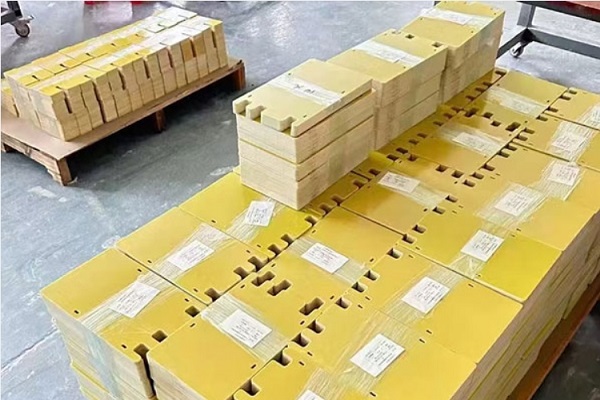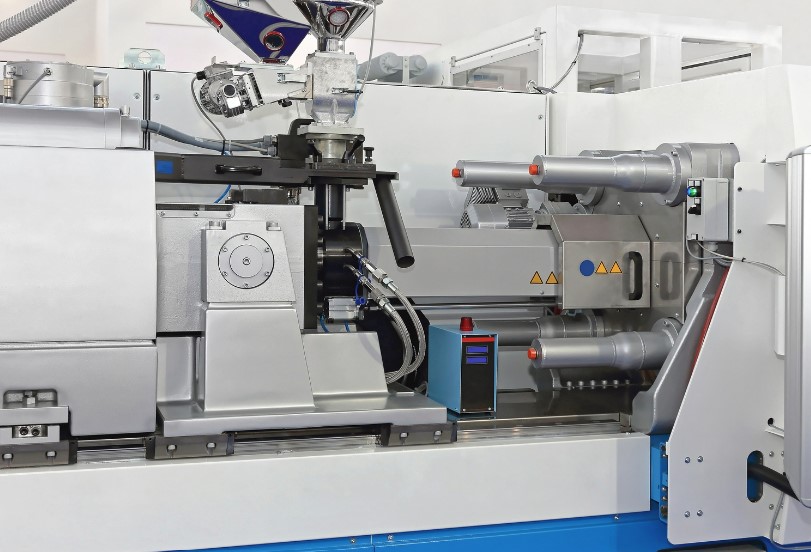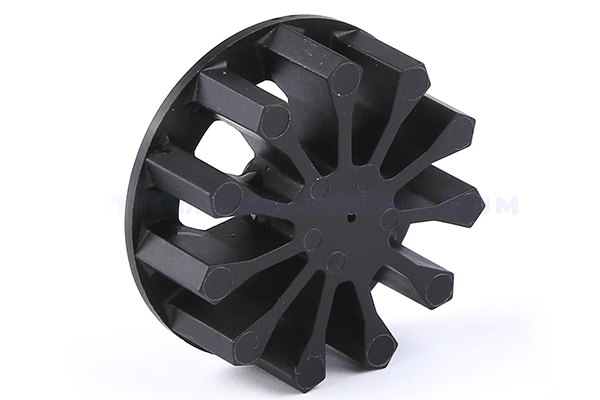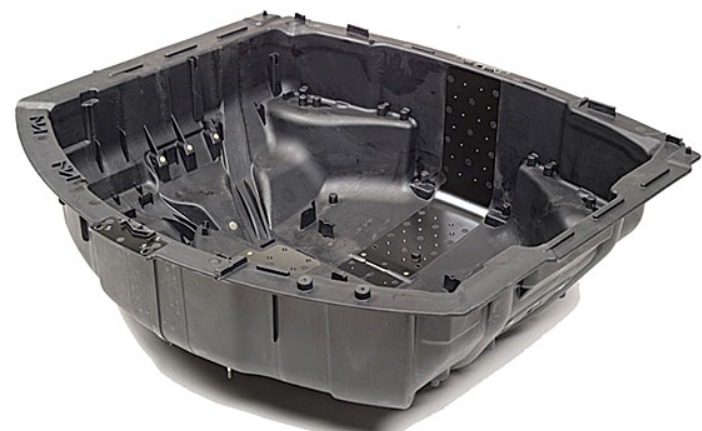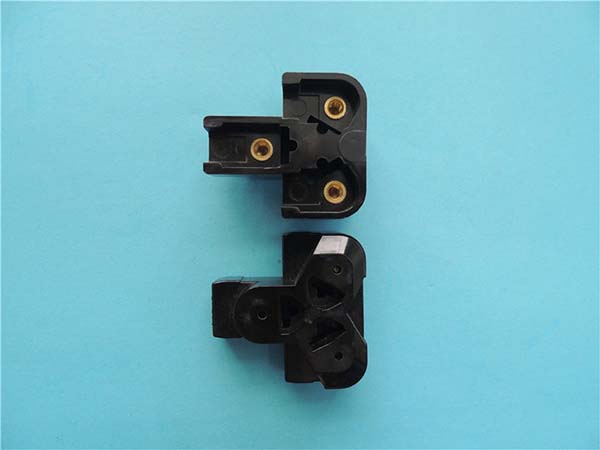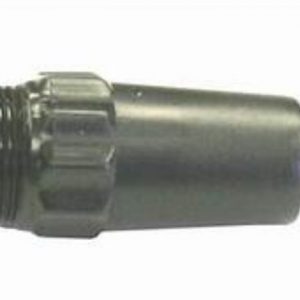1. Understanding Bakelite Phenolic Resin Injection Molding
Bakelite phenolic resin injection molding is a manufacturing process that combines the unique properties of phenolic resins with the efficiency of injection molding. Phenolic resins, a type of thermosetting plastic, are well - known for their high heat resistance, dimensional stability, and electrical insulating capabilities. When these resins are used in injection molding, they can be shaped into complex and precise parts. This section delves into the process, highlighting its steps and the chemical changes that occur during the curing of phenolic resins.
1.1 The Basics of Phenolic Resins
Phenolic resins are formed through a chemical reaction between phenol and formaldehyde. This reaction is catalyzed, typically by an acid or a base, which initiates the polymerization process. There are two main types of phenolic resins: novolac and resole.
Novolac resins are formed under acidic conditions. They are linear polymers and require the addition of a curing agent, usually hexamethylenetetramine (hexamine), to cross - link and cure. Resole resins, on the other hand, are formed under alkaline conditions and are pre - condensates with a higher degree of cross - linking potential. They can cure upon heating without the need for an additional curing agent.
The chemical structure of phenolic resins contributes to their remarkable properties. The benzene rings in the phenol provide heat resistance, while the cross - linked structure formed during curing enhances mechanical strength and dimensional stability.
1.2 The Injection Molding Process
The injection molding process for phenolic resins involves several key steps:
1. Material Preparation
The phenolic resin, along with any necessary additives such as fillers, pigments, and curing agents, is first prepared. Fillers like wood flour, glass fiber, or mica can be added to improve the mechanical properties, reduce cost, or enhance specific characteristics of the final product. Yigu Technology For example, glass fiber - filled phenolic resins have significantly higher tensile strength compared to unfilled resins.
2. Injection
The prepared resin is fed into an injection molding machine. The machine heats the resin to a molten state, typically between 150 - 200°C, and then injects it under high pressure (ranging from 50 - 200 MPa) into a pre - designed mold cavity. The high pressure ensures that the resin fills every detail of the mold cavity accurately.
3. Curing
Once the mold is filled, the resin is cured. Curing is a chemical process that transforms the molten, flowable resin into a hard, solid plastic. For phenolic resins, curing involves cross - linking of the polymer chains. In the case of novolac resins, the hexamine curing agent decomposes upon heating, releasing formaldehyde, which reacts with the phenolic resin to form cross - links. This curing process is exothermic, meaning it releases heat, and typically takes several minutes depending on the thickness and complexity of the part.
4. Ejection
After the curing is complete, the mold is opened, and the finished part is ejected. The part may require post - processing such as trimming to remove any excess material or flash that has formed during the injection molding process.
1.3 Chemical Changes During Curing
During the curing of phenolic resins, a complex series of chemical reactions take place. As mentioned, for novolac resins, the reaction with hexamine leads to the formation of methylene bridges between the phenolic rings. This cross - linking process increases the molecular weight of the polymer and transforms it from a linear, soluble material into a three - dimensional, insoluble network.
For resole resins, the curing process involves the further condensation of the pre - formed methylol groups. These groups react with each other and with the phenolic rings to form additional cross - links. The degree of cross - linking determines the final properties of the cured phenolic resin. Higher cross - linking results in greater hardness, heat resistance, and chemical resistance.
To illustrate the importance of curing time and temperature on the properties of phenolic resins, consider the following data. A study conducted on a specific phenolic resin showed that when cured at 170°C for 3 minutes, the resin had a tensile strength of 30 MPa. However, when the curing time was increased to 5 minutes at the same temperature, the tensile strength increased to 35 MPa. Further increasing the curing temperature to 180°C for 5 minutes led to a tensile strength of 40 MPa, but also a slight decrease in elongation at break, indicating a more brittle material.
| Curing Temperature (°C) | Curing Time (min) | Tensile Strength (MPa) | Elongation at Break (%) |
| 170 | 3 | 30 | 5 |
| 170 | 5 | 35 | 4.5 |
| 180 | 5 | 40 | 4 |
In conclusion, understanding the bakelite phenolic resin injection molding process, from the properties of phenolic resins to the injection and curing steps, is crucial for manufacturers aiming to produce high - quality parts with excellent heat resistance, dimensional stability, and electrical insulation properties.
2. Advantages of Bakelite Phenolic Resin Injection Molding
2.1 High - Performance Material Traits
Phenolic resins processed through injection molding offer several remarkable advantages. They can withstand high temperatures, typically up to 200°C. Some specialized formulations can even endure temperatures above 300°C for short periods. This high - temperature resistance makes them suitable for applications in harsh environments, such as in automotive engines, where components are exposed to extreme heat. For Yigu Technology example, in the production of engine - related parts like distributor caps and ignition components, phenolic resins' heat - resistant property ensures their long - term functionality.
Their excellent electrical insulation properties are crucial in the electronics industry. The volume resistivity of phenolic resins can reach up to 10¹² - 10¹⁴ ohm - cm, making them ideal for use in electrical insulators, circuit boards, and connectors. In high - voltage applications, the ability of phenolic resins to prevent electrical leakage is essential for safety and efficient operation.
Additionally, these resins are resistant to chemicals and moisture. They can resist the corrosion of common acids, alkalis, and solvents. When exposed to a 10% hydrochloric acid solution for 24 hours, phenolic resin - molded parts showed no visible signs of degradation. This chemical resistance, combined with moisture resistance, ensures the durability of the molded parts, making them suitable for outdoor applications and in environments with high humidity or chemical exposure.
The injection molding process for phenolic resins provides several operational advantages. It allows for high - volume production with consistent quality, which is essential for meeting market demands. A modern injection molding machine can produce hundreds to thousands of parts per hour, depending on the complexity of the part. For instance, in the production of small electrical components, high - volume production lines can churn out thousands of parts daily, maintaining a high level of precision and quality.
The process also results in minimal material waste. The excess resin that is injected into the mold can be recycled and reused in most cases. The material waste rate in phenolic resin injection molding is typically less than 5%, compared to some other molding processes that may have waste rates of 10 - 20%. This not only contributes to cost - effectiveness but also reduces the environmental impact.
Moreover, the cycle times are relatively short. The curing time for phenolic resins in injection molding is usually in the range of 30 seconds to 2 minutes, depending on the thickness and complexity of the part. This short cycle time enables efficient manufacturing, allowing manufacturers to produce a large number of parts in a relatively short period.
2.3 Cost - Efficiency
Although the initial setup cost for injection molding equipment can be high, the long - term benefits are significant. The high production volume and minimal post - processing requirements, such as reduced need for surface finishing, lead to overall cost savings.
For example, when producing 100,000 parts, the cost per part for injection - molded phenolic resin products can be as low as \(0.50, including material, labor, and equipment costs. In contrast, if the same parts were produced using a more labor - intensive process with extensive post - processing, the cost per part could be \)1.00 or more. The high - volume production capabilities of injection molding spread the fixed costs (such as equipment purchase and maintenance) over a large number of parts, reducing the unit cost.
The reduced need for post - processing also saves costs. Since phenolic resin parts often have a smooth surface finish right out of the mold, there is less need for additional polishing, painting, or other surface treatments. This not only saves time but also reduces the cost associated with these post - processing operations.
In summary, the advantages of bakelite phenolic resin injection molding, including high - performance material traits, process - related benefits, and cost - efficiency, make it a preferred choice for a wide range of applications in various industries.
3. Applications of Bakelite Phenolic Resin Injection Molding
3.1 Electrical and Electronic Industry
In the electrical and electronic industry, bakelite phenolic resin injection molding finds extensive applications. Electrical connectors are crucial components that ensure the reliable connection of electrical circuits. Phenolic resin - molded connectors offer excellent electrical insulation, which is essential for preventing short - circuits and electrical leakage. Their high - temperature resistance also makes them suitable for use in environments where electrical components may generate heat during operation. For Yigu Technology example, in power distribution systems, phenolic resin connectors can withstand the heat generated by high - current flow, ensuring stable electrical connections.
Insulators are another area where phenolic resins shine. They are used to isolate electrical conductors, preventing the flow of electricity to unwanted areas. In high - voltage transmission lines, the insulators need to have outstanding electrical insulation properties and mechanical strength. Phenolic resin insulators can meet these requirements, with their high volume resistivity (as mentioned earlier, up to 10¹² - 10¹⁴ ohm - cm) and ability to withstand high mechanical stress.
Switch components, such as switch housings and contact carriers, are often made of phenolic resins. The heat resistance of phenolic resins is beneficial when the switch experiences arcing during operation, which can generate high temperatures. The dimensional stability of the resin ensures that the switch components maintain their shape and functionality over time, providing reliable switching performance. A study on the failure rate of electrical components made of different materials showed that phenolic resin - based switch components had a failure rate of only 0.5% after 10,000 operating cycles, compared to 2% for components made of some other common plastics.
| Component | Property | Phenolic Resin | Other Plastics |
| Electrical Connectors | Electrical Insulation | Excellent (Volume Resistivity: 10¹² - 10¹⁴ ohm - cm) | Varies, often lower |
| Insulators | Mechanical Strength (MPa) | High (Typically 30 - 50 for unfilled, higher with fillers) | Lower in many cases |
| Switch Components | Failure Rate after 10,000 Cycles | 0.5% | 2% |
3.2 Automotive Industry
The automotive industry also heavily relies on bakelite phenolic resin injection molding. Ignition parts, such as distributor caps and ignition coils, are exposed to high temperatures and electrical currents. Phenolic resins' high - temperature resistance and electrical insulation properties make them ideal for these applications. Distributor caps made of phenolic resins can withstand the high - voltage sparks and heat generated during the ignition process, ensuring the proper distribution of electrical current to the engine cylinders.
Engine components that require dimensional stability, even under high - temperature conditions, often utilize phenolic resins. For Yigu Technology instance, some engine covers and intake manifold components are made of phenolic resin - based composites. These parts need to maintain their shape to ensure proper engine operation. The dimensional stability of phenolic resins, which can maintain their shape within a tolerance of ±0.1 mm even at temperatures up to 200°C, makes them suitable for these engine components.
In addition, phenolic resins are used in the production of various interior components. Door handles and knobs made of phenolic resins not only provide a durable and heat - resistant option but can also be easily molded into different shapes and colors to match the interior design of the vehicle.
3.3 Consumer Goods
Consumer goods represent a significant application area for bakelite phenolic resin injection molding. Handles for kitchen utensils, such as pots, pans, and cutlery, are commonly made of phenolic resins. The heat resistance of phenolic resins ensures that the handles do not become too hot to hold when the utensils are in use. They are also resistant to moisture and chemicals, which is important in a kitchen environment where they may come into contact with water, detergents, and food substances.
Appliance knobs, like those on stoves, ovens, and refrigerators, are often produced using phenolic resin injection molding. These knobs need to be durable, easy to grip, and able to withstand repeated use. Phenolic resins can be formulated to have a high - friction surface for better grip, and their hardness ensures that they do not wear down easily over time.
Decorative items, such as small figurines and decorative panels, can also be made using phenolic resins. The resins can be colored and finished in various ways, including polishing, painting, and embossing, to create aesthetically pleasing products. For Yigu Technology example, a study of consumer preferences for decorative items showed that 70% of consumers preferred items with a smooth, high - gloss finish, which can be easily achieved with phenolic resins through proper finishing techniques.
In conclusion, bakelite phenolic resin injection molding has a wide range of applications across the electrical and electronic, automotive, and consumer goods industries. Its unique combination of properties, including high - temperature resistance, electrical insulation, dimensional stability, and ease of coloring and finishing, makes it a versatile material for manufacturing a variety of products.
4. Comparison with Other Molding Methods
Bakelite phenolic resin injection molding has its own unique characteristics when compared with other common molding methods such as compression molding and transfer molding. Each method has its advantages and limitations, and the choice depends on various factors including the nature of the product, production volume, and cost requirements.
4.1 Cycle Time
One of the significant differences lies in the cycle time. In bakelite phenolic resin injection molding, the cycle time is relatively short. As mentioned before, the curing time for phenolic resins in injection molding is usually in the range of 30 seconds to 2 minutes, depending on the thickness and complexity of the part. This allows for high - volume production.
In compression molding, the cycle time is much longer, often taking hours. This is because in compression molding, the material is placed in an open mold, and then heat and pressure are applied. The curing process is slower as the heat has to penetrate the material evenly. For example, when molding large, thick - walled parts with compression molding, the curing time can be 2 - 3 hours.
Transfer molding has a moderate cycle time. It is faster than compression molding but slower than injection molding. In transfer molding, the pre - heated material is placed in a transfer pot and then forced into the mold cavity through runners. The cycle time is typically around 5 - 15 minutes, depending on the part size and complexity.
4.2 Cost
The cost - effectiveness of each molding method also varies. Bakelite phenolic resin injection molding has a relatively low cost per unit for high - volume production. Although the initial investment in injection molding equipment is high, the high production volume spreads the fixed costs over a large number of parts. Additionally, the minimal material waste and short cycle times contribute to cost savings. As calculated before, when producing 100,000 parts, the cost per part for injection - molded phenolic resin products can be as low as $0.50, including material, labor, and equipment costs.
Compression molding has a high tooling cost. The molds used in compression molding are often simple in design but require high - quality materials to withstand the high pressures and temperatures. However, the material cost can be lower as there is less waste in some cases. But overall, for high - volume production, the cost per unit is relatively high due to the long cycle time.
Transfer molding has a moderate cost. The tooling cost is lower than that of compression molding as the mold design is less complex in some aspects. However, the process requires additional equipment such as a transfer pot, which adds to the overall cost. The cost per unit is also moderate, depending on the production volume and the complexity of the parts.
4.3 Part Complexity and Precision
Bakelite phenolic resin injection molding excels in producing complex - shaped parts with high precision. The high - pressure injection process ensures that the resin fills every detail of the mold cavity accurately. For Yigu Technology example, in the production of small, intricate electrical components, injection molding can achieve tight tolerances of ±0.05 mm.
Compression molding is better suited for simple - shaped parts. It is difficult to create complex geometries with compression molding as the material flow during the molding process is limited. The precision of compression - molded parts is also lower, with typical tolerances in the range of ±0.2 - 0.5 mm.
Transfer molding can produce parts with moderate complexity. It offers better precision compared to compression molding, with tolerances around ±0.1 - 0.2 mm. However, it still cannot match the precision and complexity - forming capabilities of injection molding.
The following Yigu Technology table compares bakelite phenolic resin injection molding with other common molding processes:
| Molding Method | Cycle Time | Cost (per unit for high - volume production) | Part Complexity and Precision |
| Bakelite Phenolic Resin Injection Molding | Short (30 seconds - 2 minutes) | Low ($0.50 for 100,000 parts example) | High (Complex shapes, tight tolerances ±0.05 mm) |
| Compression Molding | Longer (2 - 3 hours for large thick - walled parts) | High | Low (Simple shapes, tolerances ±0.2 - 0.5 mm) |
| Transfer Molding | Moderate (5 - 15 minutes) | Moderate | Moderate (Moderate complexity, tolerances ±0.1 - 0.2 mm) |
In conclusion, bakelite phenolic resin injection molding stands out in terms of short cycle time, cost - effectiveness for high - volume production, and the ability to produce complex and precise parts when compared with other common molding methods. These advantages make it a preferred choice for many industries with specific production requirements.
5. Performance Data of Bakelite Phenolic Resin in Injection Molding
Understanding the performance data of bakelite phenolic resin in injection molding is crucial for engineers and manufacturers to make informed decisions about material selection and product design. This section delves into the mechanical, thermal, and chemical resistance properties of phenolic resins processed through injection molding.
5.1 Mechanical Properties
Phenolic resins processed through injection molding exhibit good mechanical properties. They have a tensile strength ranging from 50 - 80 MPa, which is essential for applications where the material needs to withstand stretching forces. For example, in the production of electrical connectors, the phenolic resin needs to have sufficient tensile strength to ensure that the connector does not break under normal usage or when subjected to mechanical stress during installation or removal.
The flexural strength of these resins is in the range of 80 - 120 MPa. Flexural strength is important for components that are subjected to bending loads. In the case of switch components, such as switch levers, the phenolic resin must have a high flexural strength to withstand repeated bending during the operation of the switch without cracking or breaking.
The hardness of phenolic resins, measured on the Rockwell M scale, is typically 100 - 120. This high hardness makes them suitable for applications where wear resistance is required. For instance, in the manufacturing of knobs and handles for appliances, the phenolic resin's hardness ensures that the surface does not easily scratch or wear down over time, maintaining its aesthetic and functional properties.
5.2 Thermal Properties
The thermal properties of these resins are also notable. They have a heat deflection temperature of 180 - 220°C. This means that phenolic resins can maintain their structural integrity and mechanical properties up to these temperatures. In automotive applications, engine - related components made of phenolic resins need to withstand high temperatures generated during engine operation. The high heat deflection temperature of phenolic resins allows them to be used in parts such as distributor caps and ignition components, where they are exposed to the heat of the engine environment.
The coefficient of thermal expansion of phenolic resins is 3 - 5 x 10^-5 /°C. A low coefficient of thermal expansion is important as it indicates that the material will not expand or contract significantly with changes in temperature. This property is crucial for components that need to maintain a precise fit and dimensional stability, especially in applications where temperature variations are common, such as in electrical enclosures that may be exposed to different environmental temperatures.
5.3 Chemical Resistance
Phenolic resins are highly resistant to a variety of chemicals. They can withstand acids, alkalis, and organic solvents, making them suitable for use in chemical - rich environments. For example, in industrial applications where equipment may come into contact with corrosive chemicals, phenolic resin - molded parts can be used for components such as valves, pumps, and pipes. A study showed that when phenolic resin samples were immersed in a 10% sulfuric acid solution for 48 hours, there was no significant change in their mass or mechanical properties, indicating their high resistance to acidic environments. Similarly, in a 10% sodium hydroxide solution, phenolic resins maintained their integrity, demonstrating their resistance to alkaline substances as well.
In summary, the mechanical, thermal, and chemical resistance properties of bakelite phenolic resin in injection molding make it a versatile material for a wide range of applications. These performance data serve as a guide for engineers and manufacturers to determine the suitability of phenolic resins for specific product requirements.
6. conclusion
In Yigu Technology conclusion, bakelite phenolic resin injection molding is a highly valuable manufacturing process with a wide range of applications and numerous advantages. The unique properties of phenolic resins, such as high - temperature resistance, excellent electrical insulation, and chemical resistance, make them suitable for use in various industries.
The injection molding process further enhances the utility of these resins. It allows for high - volume production with short cycle times, ensuring cost - effectiveness and consistent quality. The ability to produce complex - shaped parts with high precision makes it possible to meet the diverse design requirements of different products.
When compared with other molding methods like compression molding and transfer molding, bakelite phenolic resin injection molding stands out in terms of cycle time, cost - efficiency for high - volume production, and part complexity and precision. The performance data of phenolic resins in injection molding, including their mechanical, thermal, and chemical resistance properties, provide a solid basis for engineers and manufacturers to make informed decisions regarding material selection and product design.
As industries continue to evolve and demand materials with better performance and cost - effectiveness, bakelite phenolic resin injection molding is likely to play an even more significant role. Further research and development in resin formulation and molding process optimization may lead to the production of phenolic resin - based products with even better properties and wider applications. It is crucial for manufacturers and engineers to stay updated on the latest advancements in this field to fully leverage the potential of bakelite phenolic resin injection molding.
